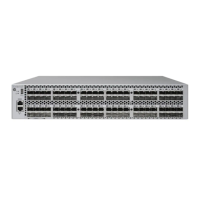Examples
To create a DEFINE and use it in a RESTORE command:
• To use the DEFINE =MYBACKUP to specify that the labeled backup tapes NY082 and NY004
be used for the RESTORE process (if you use the VOLUME attribute, you must specify tape
volume IDs in the order the tapes were written):
1> SET DEFMODE ON
2> ADD DEFINE =MYBACKUP, CLASS TAPE, LABELS BACKUP, &
2> &VOLUME (NY082,NY004)
3> RESTORE =MYBACKUP, *.*.*, LISTALL, TAPEDATE
The two labeled tapes specified in this first example were written by the BACKUP utility, which
means the files are in tape format 3, and the tape label includes a B in the
Label-Standard-Version field.
• To restore a labeled tape without using automatic volume recognition (AVR):
1> ADD DEFINE =LAZY, CLASS TAPE, LABELS BYPASS, &
1> &DEVICE $TAPE1
2> RESTORE =LAZY, *.*.*, LISTALL, TAPEDATE
$ZSVR (the labeled tape server process) sends a message to the operator console and the
MEDIACOM console (if one exists) to request the release of the tape drive for use in LABELS
BYPASS mode. The operator must issue the MEDIACOM ACCEPT command to release (or
open) the tape drive. MEDIACOM is only used if the BLPCHECK option is set for the tape
drive. Tape volume IDs cannot be specified when LABELS BYPASS is used.
For more information on labeled tape operations, see the DSM/Tape Catalog Operator Interface
(MEDIACOM) Manual.
RESTORE Guidelines and Examples 177

